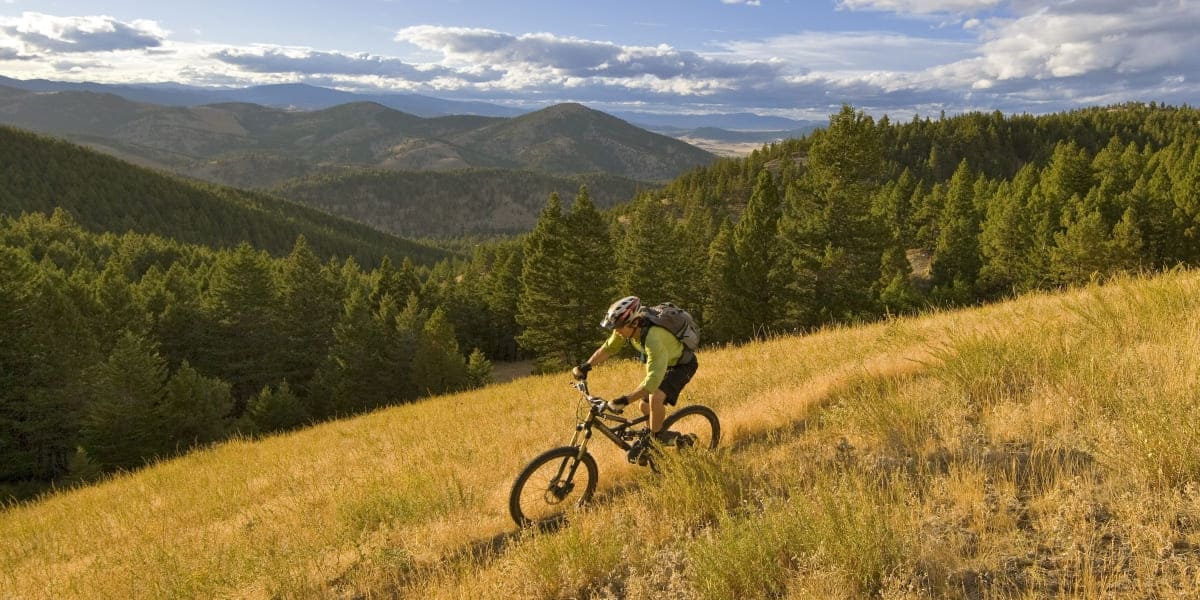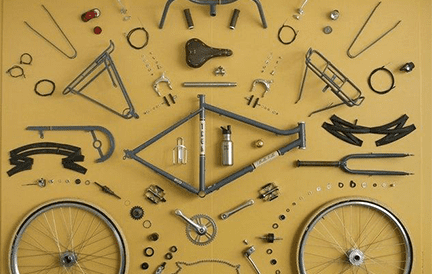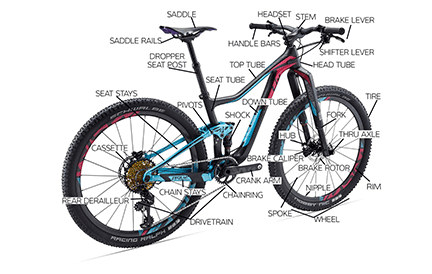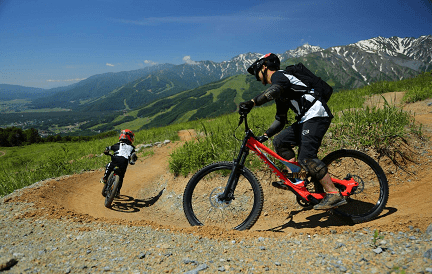A 650b wheelset is ideal for gravel riders who like to spend their time on local mountain bike trails rather than on the open road. Smaller diameter rims with large tyres give a more lively sensation while absorbing bumps and roots. Touring & bike packing rigs can also benefit from a 650b wheelset. Larger volume tyres (40mm to 2.1 inches) give better compliance for heavier bikes. But smaller wheel diameters allow for easier climbing. Gravel bikes with substantial tyre clearance may use both 700c and 650B wheels on the same frame. For a range of travels, each wheel size is suitable.
- Part 1: Introduction To 650b Wheelset
- Part 2: Diameter Significance Of The 650b Wheelset
- Part 3: Acceleration And Momentum Of 650b Wheelset
- Part 4: What Are The Benefits Of Using 650b Wheels
- Part 5: What Are Some Of The Drawbacks Of 650b Wheels
- Part 6: Long-Term Use of 650b Mountain Bike Wheelsets
- Part 7: Conclusion
Part 1: Introduction To 650b Wheelset
The designation 650b wheelset comes from the French sizing language, where the number represents the approximate diameter of the wheel, including the tyre, and the letter represents the approximate width of the wheel. A 650b wheel has a diameter of around 27.5 inches measured from the tyre edge to the tyre edge. This compares to a conventional mountain bike wheel of 26 inches and a so-called ‘29er‘ wheel of 29 inches 700c road wheel is also 29 in diameter.
The conventional option for most gravel riders and racing is 700c wheels, which have a bigger diameter rim. For enhanced compliance and traction 650B wheels have small diameter rims, which are commonly combined with larger volume tyres.
Gravel Wheels 650b
Riders can utilise far wider tyres on 650B wheels than on 700c wheels and these high-volume tyres can be used at lower pressures. On loose dirt climbs or descents, fat and plush 650B tyres provide higher traction and they easily absorb the lumps as well as bumps well across tough terrain. Furthermore, when using the same frame & gearing, 650B wheels seem like you have more climbing gear than 700c wheels because of the smaller circumference.
What is the best wheel size for cycling on mixed surfaces? More bikers delving into the progress in this area of gravel are questioning this question. The two most common sizes are 700c, which is the norm for road or cyclocross bikes, and 650b, often known as 27.5′′ in the mountain biking industry. Both wheel sizes have advantages and disadvantages that make them suited for different riding objectives and conditions, although in some ways, the two-wheel diameters can sometimes be interchanged. Bikes with 650b and 700c wheels seem to be suitable for a variety of off-road riding scenarios. This information will assist you in determining which option is best for you.

Part 2: Diameter Significance Of The 650b Wheelset
The diameter of the wheels and tyres affects how a bike feels and handles. A 25-30 mm tyre on a 700c wheel has nearly the same outer diameter as a 42-47 mm tyre on a 650b wheel. The differences become more apparent when you try out new tyres. Compared to the last example, a 40 mm gravel tyre on a 700c increases the wheel size and hence the trial. More trails mean a more stable ride with slower, more controlled handling. Fewer trails mean more responsive handling, which can be a touch nerve-wracking at times but is ideal for difficult riding.
The amount of bottom bracket clearance that the bike has will also be modified by changing wheel diameters. Switching to small diameter wheels may result in less clearance, at the BB which may be beneficial if you want more stability due to a lower centre of mass, but it may make clearing some obstructions more difficult.
Tire Pressure Should Be Reduced
The ability to use lower tyre pressure for better comfort & traction is one of the key benefits of larger tyres. The wider the tyre, the lower the pressures you can run without risking the rim bottoming out or flatting. With smaller diameter wheels your easiest gears will appear even easier on a difficult climb. However, 650b and 700c dirt wheels often have identical sized tyres, so moving between the two won’t affect your bike’s gearing. Smaller wheels need greater gearing, whereas bigger wheels demand lower gearing.
Finding a frame that can accept exceptionally wide tyres on 700c wheels may not always be possible. When frame clearance allows, it’s possible to run bigger tyres with a smaller 650b wheel. Maximum tyre clearance for frames with 700c wheels is typically around 40 mm, however, frames with 650b wheels can support 2.1′′ (53mm) or even 2.2′′ (56 mm) tyres. Selection of tyres you can install bigger tyres to your bike, with 650b wheels without having to change the design of your bike’s frame or fork.
Weight
For gravel or adventure riding, there are numerous tyre options. Many different types of road and gravel tires are available for 700c wheels. However, the alternatives are restricted due to the newness of the 650b wheel size. In fact, larger tyres may add weight to your bike in the form of rubber instead of wheel mass. Another thing to keep in mind is that wider tyres are nearly usually heavier than narrower ones.
Friction
With the same tyres, a 650b wheel travels the same distance as a 700c wheel. In theory, larger tyres on 650b wheels will reduce friction and reduce the number of revolutions required. In addition, a 650b wheel requires more spins than a 700c wheel with the same tire diameter.
Part 3: Acceleration and Momentum of 650b wheelset
People who ride 650b & 700c wheels interchangeably often comment that the smaller 650b wheel feels like they will get up to speed faster, while the larger 700c wheels seem to keep their momentum and speed better. The laws of rotating mass can explain some of this. Because a lighter wheel spins up faster than a heavy one, a 650b wheel will be faster than a 700c wheel. When you put 42 mm tyres on a 650b wheel, you’re likely to lose a lot of that benefit. A larger wheel will roll over obstacles more easily, allowing you to maintain more velocity in tough terrain than a smaller wheel.
Cyclocross
If you want to race cyclocross competitively, keep in mind that the rules restrict what kind of equipment you can use. Cyclocross racers are not permitted to use tyres that are wider than 33 mm and 650b wheel is not permitted. If you planning on a racing cross, and don’t want to deal with several wheelsets, 650b wheels are a no-brainer.
So, what is the best wheel size for you? Both 650b & 700c wheels have unique characteristics that make them popular among dirt and adventure riders. Which one is best for you or your riding is largely determined by your priorities. What are the differences between 650b and 27.5in wheels? Mountain or gravel bike advantages and disadvantages what is the difference between a 650b and a 27.5in a wheel? 650b/27.5in wheels are common on mtb and dirt bikes, but what are the pros and drawbacks?
Part 4: What Are The Benefits Of Using 650b Wheels
650b or 27.5in wheels provide the same rapid acceleration & nimble feel like 26in mountain bike wheels but with a hint of 29in wheels’ smoother feel, additional stability, and enhanced traction. They’re also easier to ride than 29ers for smaller riders.
The 650b wheelset is particularly popular in mountain bike disciplines since it provides a good compromise between 26in & 29in wheels for many riders. With somewhat greater clearances than 29ers, frames for 27.5in wheels may be made utilizing established 26 wheel geometry.
The bigger capacity tyres linked with 650brims enable lower air pressure for gravel riders. As a result, the depth of the tyre’s sidewall or overall tyre volume absorbed part of the road’s bumps without resonating into the rider’s body, increasing on-bike comfort.
Riders can also run high-volume tyres on 650b wheels without compromising the geometry or handling of their frame.
In this way, a gravel rider has the potential benefits of a plusher-grippier tyre without modifying the frame shape, which might affect the bike’s handling.
A similar wheel construction with a 700c rim switched for a 650brim is likely to be lighter. The rim diameter will be smaller and the spokes will be shorter. The smaller diameter rim, on the other hand, maybe wider, adding weight. It may also be stiffer though the larger tyre should compensate for this.
Part 5: What Are Some Of The Drawbacks Of 650b Wheels
Some say the 650b wheelset, or 27.5-inch wheel, does not smooth out trail vibration as efficiently as a 29-inch wheel or provide as much grip as a 26-inch wheel. It is also slower to accelerate than a 26-inch wheel and less manoeuvrable at modest speeds.
Just like every other aspect of cycling, choosing the right tyre for the job is critical.
The secret is to consider the terrain (any increase in rolling friction would be felt more acutely on smooth tarmac).
How important the other advantages of 650b wheels are to you namely the comfort or grip associated with larger tyres. Because 650b is a newer gravel bike style, there are a lesser number of wheels or tyres to pick from, however, the availability is improving. Ultimately as with most bike or component selections, deciding between 650b/27.5in and 29in combination is a matter of personal preference.
Part 6: Long-Term Use of 650b Mountain Bike Wheelsets
Many of the early steel-wheeled clunkers that gave rise to the classic mountain bike had 650b wheels thus; The long wheelbases and huge tyre clearances of the frames allowed for bigger wheels and tyres. In addition to the 650b and 700c rims, 27 road rims were widely available. Larger 29inch mountain bike tires need longer 700c road rims. 26in rims and tyre options were becoming more numerous than 650b or 27in by the moment the early mtb craze got off the ground. Most frames were in 26in wheels as well, therefore the practice stuck with most prominent frame builders.
Part 7: Conclusion
A few custom manufacturers were still experimenting with huge wheels on mountain bikes. And Gary Fisher’s launch of a line of 29ers didn’t take long to reignite interest in them. Within a year or two, large wheel fans had more fork, rim, and tire choices. When 29ers became mainstream, it was just a matter of time before 650b wheelset or 27.5in followed. It made it reasonable to examine wheels that were halfway between the existing 26in and 29in specifications.









